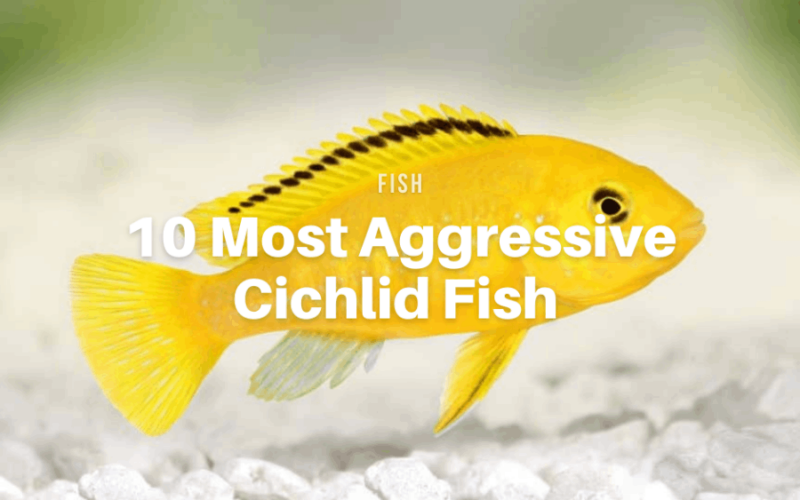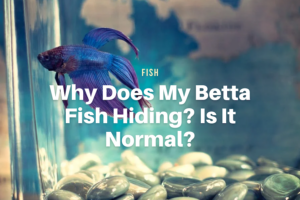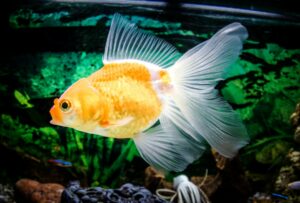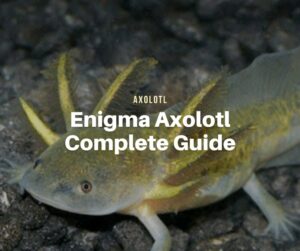Originating in South America, Africa, and Asia, cichlid is a mesmerizing fish species with a colorful coating.
Despite their attractive appearance, some cichlids are bad-tempered, making them an ideal choice for predatory and aggressive freshwater aquariums.
When you decide to keep this tropical fish, you can expect territorial behavior. That means they will attack other species that come to their territory.
These colorful fish are also energetic, so providing an ample tank is essential.
Different kinds of African cichlids may have different characteristics and temperaments. Before choosing which cichlids to keep in your home aquarium, it is important to know certain types with the best aggressiveness.
Fortunately, we have collected the top 10 cichlids that are known for their bad temperament. They are more likely to fight with other tropical fish, so it is worth noting that you should keep them in a separate tank.
Top 10 Most Aggressive Cichlids for Home Aquarium
Here are what we considered 10 of the most aggressive Cichlids for home fish tanks.
Umbee Cichlid
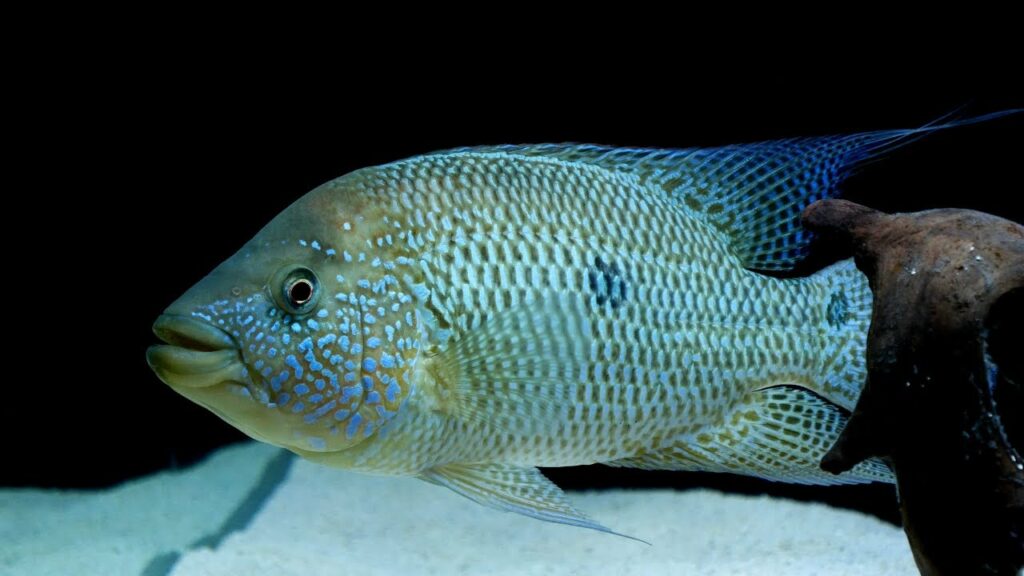
Scientifically known as Caquetaia Umbriferus, Umbee is a highly aggressive cichlid originating in South America and Central America.
Umbee cichlid can grow up to 24 inches for males and 20 inches for females, making it one of the large cichlids that require a bigger tank with more gallons of water.
The carnivorous tropical fish has an attractive coating with a yellowish base and turquoise or blue spotting.
Young Umbee looks cute and tends to be shy but as they grow, they will have a large mouth with big teeth that make them look ferocious. This explains why they are also called Blue Freckled Monsters.
In the wild, Umbee Cichlids prefer warm waters. When you decide to keep this little creature, it becomes essential to provide a tank with ideal water conditions.
Maintain ideal pH and temperature so umbee cichlid can thrive happily in their new home.
Dovii Cichlid
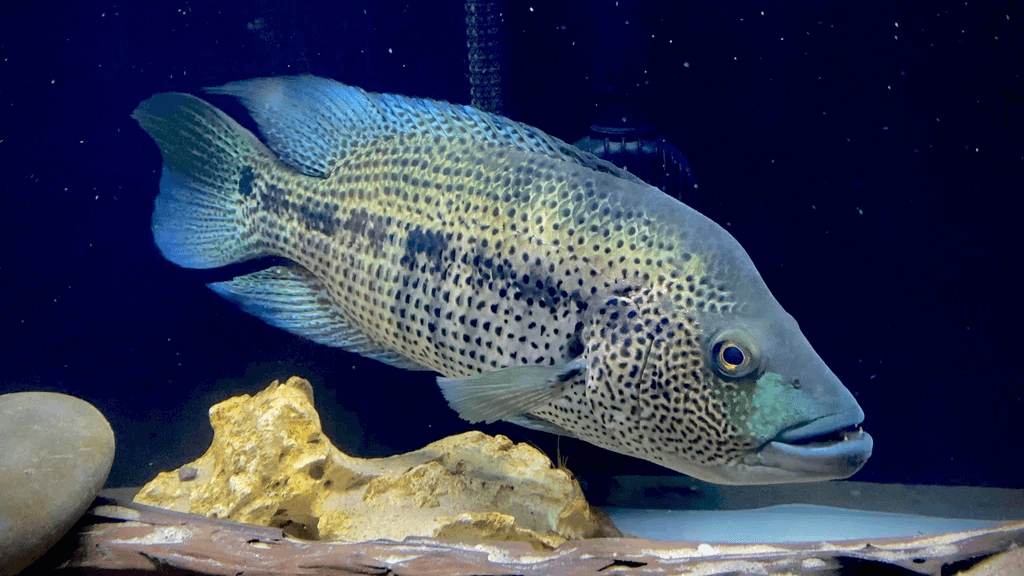
Do you want to keep the most aggressive cichlid and add visual appeal into the tank at a time? Dovii is surely for you. This kind of cichlid has a beautiful appearance with different coloration between male and female.
Found in water bodies in Costa Rica and Nicaragua, female Dovii has a yellow or base coloration which tends to be more prominent during the breeding season.
The males have a vibrant body coat of blue tone with a white base and black markings.
In the wild, Dovii Cichlid can reach a length of 28.5 inches, which is quite huge for your home aquarium.
Young Dovii tends to be docile but when they grow larger, their temperament change drastically. They turn out to be fierce, aggressive, and powerful with muscular bodies and large teeth.
The highly aggressive carnivores live in warm waters with ideal temperatures between 75 and 81 degrees. Set your aquarium heater to this temperature, so they won’t be stressed out.
Black Nasty Cichlid
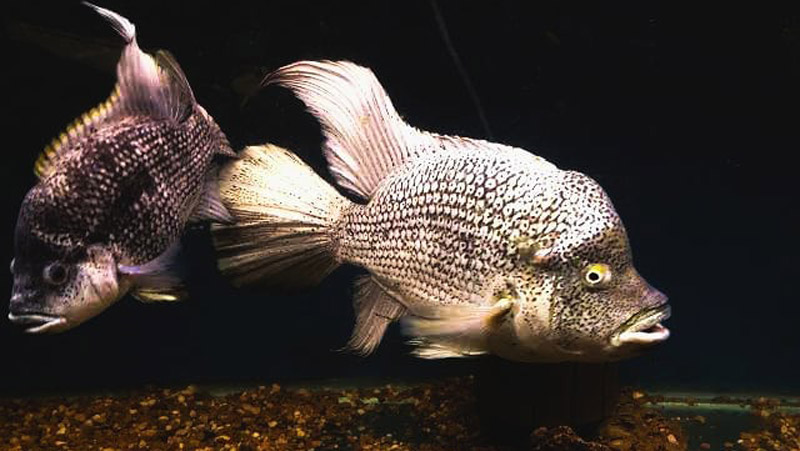
Also known as Haitian Cichlid, this is a neotropical and large cichlid commonly found in rivers and lakes in the Dominican Republic and Haiti.
Black Nasty Cichlid is characterized by a silver base and dark spotting over the entire body, making it look attractive in your tank.
When it comes to size, Black Nasty Cichlid can grow up to 15 inches. Though it is not as large as Umbee or Dovii, you’ll still need to provide a large aquarium for the cichlid to swim around.
Because of its aggressiveness, you shouldn’t mix Haitian Cichlid with other fish species in the same tank.
Not only are they aggressive, but Black Nasty Cichlid are also omnivores. That means they can eat anything they want in the tank, including smaller fish.
Besides, it is not recommended to add two males in a tank as they will attach to each other.
Sieve Cichlid
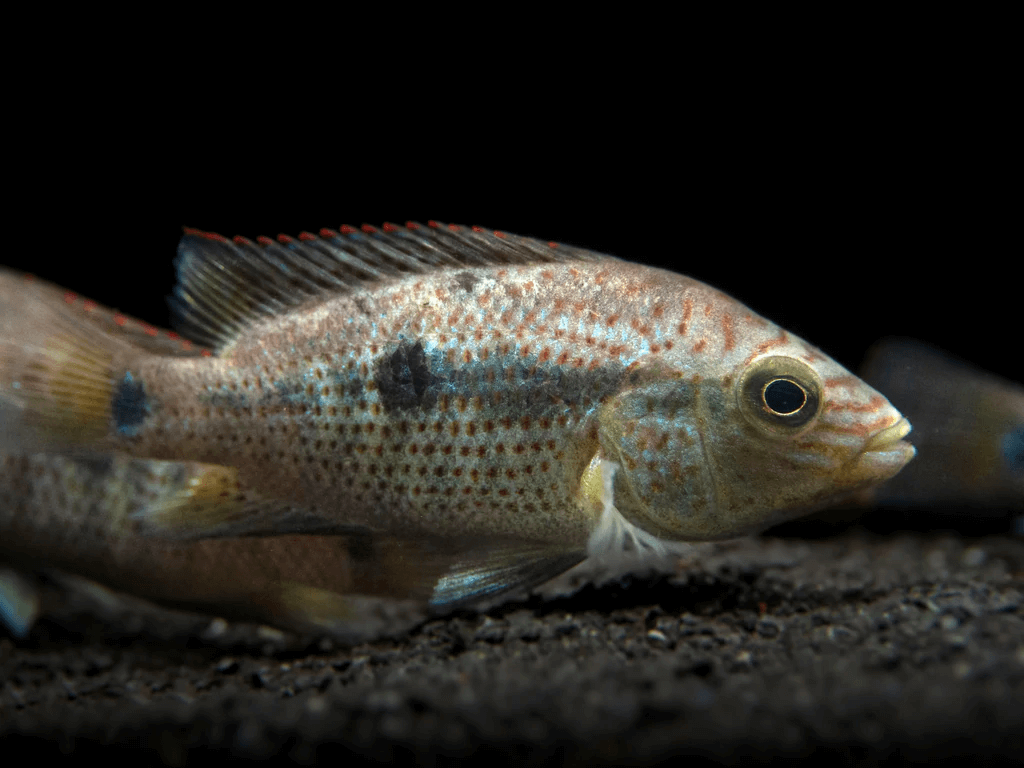
Sieve Cichlid or Nandopsis Grammodes is the most aggressive cichlid originating in Mexico. Also known as Mini Dovii, it is literally a smaller version of Dovii cichlid.
This species has an attractive appearance with a large head, yellow or gold base, and orange markings throughout the body.
The neotropical cichlid is also recognized for its black stripe which extends into its mid-line.
While Dovii can reach up to 28 inches in length, this mini version can only reach up to 12 inches. What’s more, their growth is slower than most cichlids.
Despite their small size, Sieve Cichlids are tough fighters. They are aggressive carnivores that will battle with other fish species in the same tank.
Not to mention Sieve Cichlid will defend its territory no matter what it takes.
The minimum requirement before keeping Sieve Cichlid is a 75-gallon aquarium for a single adult. If you want to keep a pair of them, get at least a 125-gallon aquarium.
It is also essential to prepare ideal water conditions, including the temperature, pH, and hardness.
Red Devil Cichlid
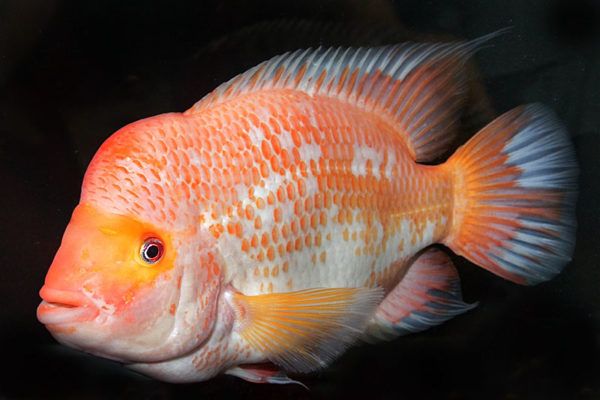
Red Devil Cichlid is among the most popular cichlids among aquarists. They have a distinctive appearance with bright, thick, orange lips.
They are also recognized for a large hump on their head, not to mention they come in a vibrant coat—the coloration depends on diet, environmental factors, and sunlight exposure.
Red Devils are highly aggressive and it is impossible to add other fish species in the same tank.
They have strong jaws and razor-sharp teeth that will kill their tank mates in a second. Despite their beautiful appearance, this cichlid is a true killer.
Scientifically known as Amphilophus Labiatus, Red Devils can reach a length of 12 inches.
A 55-gallon tank with 72 to 77 degrees water temperature will be great to keep a single adult Red Devil Cichlid. Being an omnivore, you have a long list of diets to feed this cichlid.
Green Guapote Cichlid
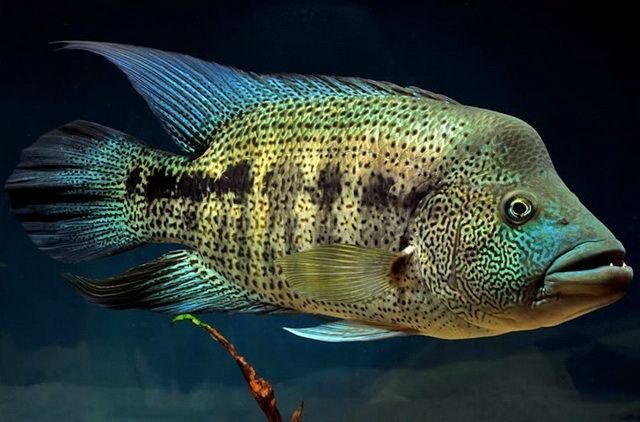
Scientifically named Nandopsis Beani, this is an attractive yet aggressive cichlid species found in Mexico, particularly in the Pacific slope.
Freshwater monster is currently hard to obtain because they are quite rare in recent years.
Green Guapote Cichlid has green and yellow coloration over the entire body. It also has dark markings with distinctive fins that will be great when swimming around in your tank.
What’s interesting, the actual color may change depending on the mood, ranging from yellow to dark greens.
Nandopsis Beani is not so large in size since it can only reach up to 11 inches in length. They are known as an aggressive territorial species that will kill any intruders.
If you decide to keep this freshwater creature, be sure not to add other species into the same tank.
Though they are born natural fighters, they are not really good at fighting back. They are also susceptible to bloat, especially if you fail to maintain ideal water conditions.
Flowerhorn Cichlid
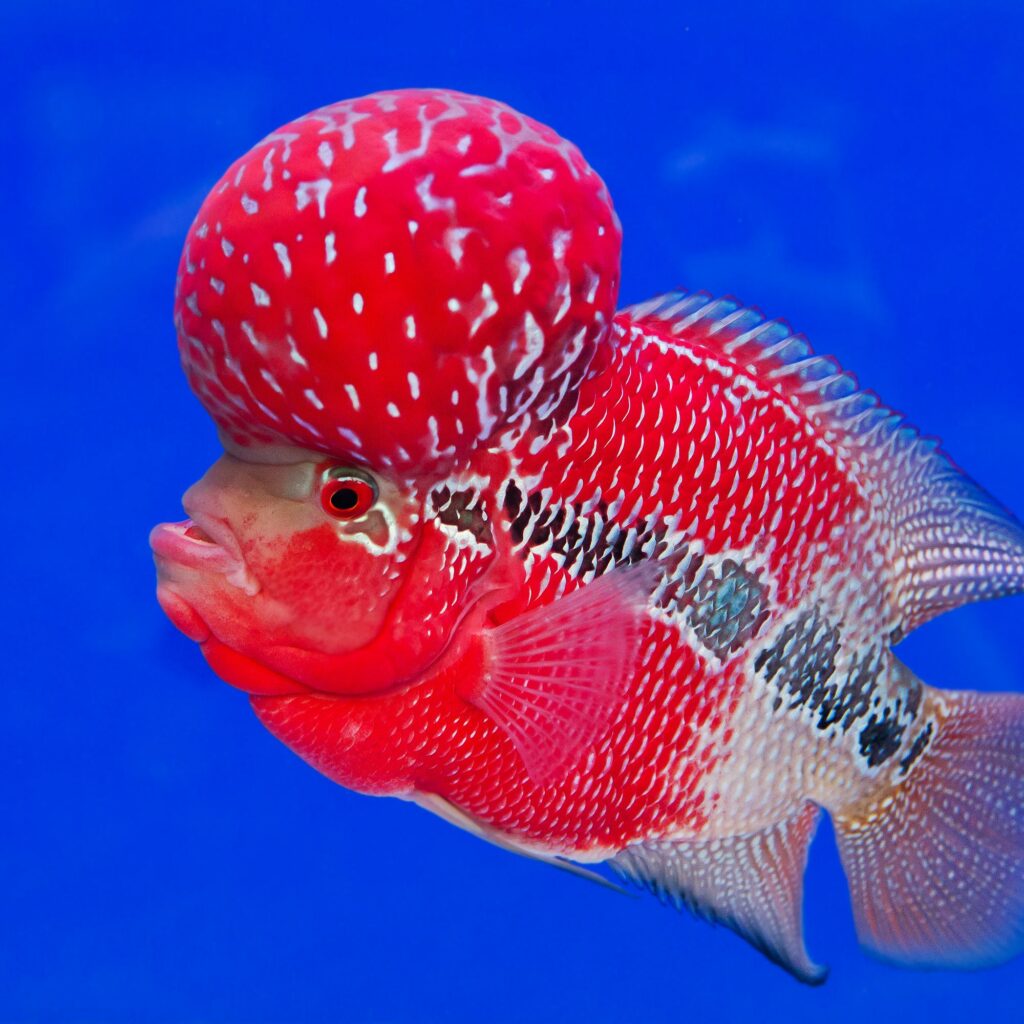
Popularly known as louhan, the Flowerhorn Cichlids is an aggressive and territorial species. They cannot be found in the wildlife for it is a hybrid species, which means they are bred in captivity.
Flowerhorn Cichlid vibrant colors, large size, and distinctive forehead hump make them an aquarium favorite among hobbyists.
The vivid-colored hump on their forehead, also known as Kok, is the most noticeable feature of the species.
According to Chinese culture, the Flowerhorn fish is not only beautiful but is also believed to bring a huge amount of luck and love.
However, it is worth noting that louhans are extremely aggressive. They will dominate the tank and attack any intruders.
They can reach up to 18 inches in length, so it is essential to prepare a larger tank. Due to their aggressiveness, Flowerhorn Cichlids are not ideal for a community tank.
Istlanum Cichlid
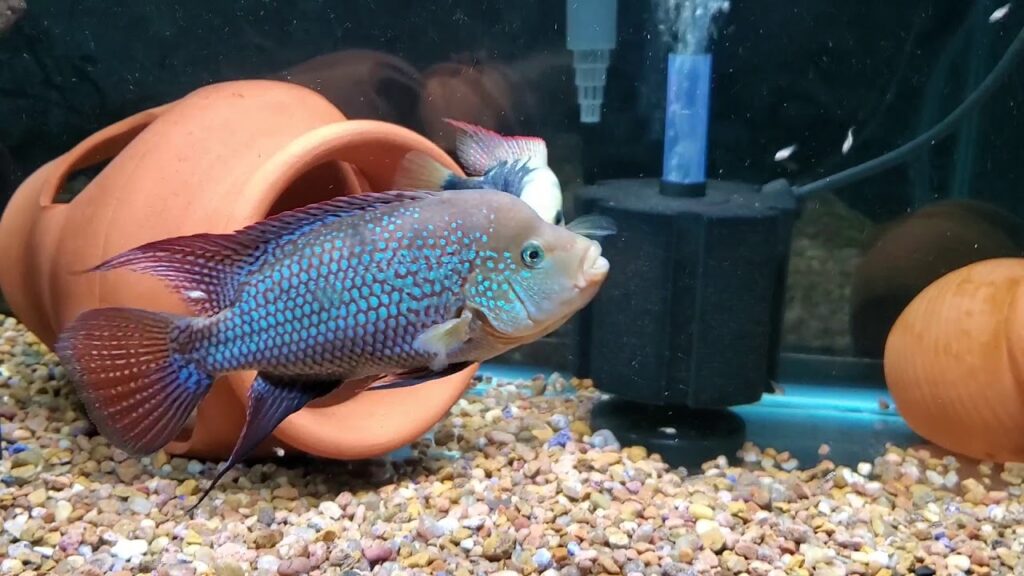
If you are into rare, aggressive cichlids that are hard to obtain, then Istlanum deserves your attention. Found in Mexico, this cichlid species has unique personality habits and vivid colors.
You can expect a yellow base over the entire body and black spotting in the middle part of their flank.
This species also has a noticeable dark green head and translucent fins with iridescent speckles which will add attraction to your tank.
Just make sure you don’t add other fish species as Istlanum will attack them in a matter of seconds.
Despite extreme aggressiveness often addressed to this species, some of them tend to be passive. But still, it is not a good reason to put Istlanum in a community tank.
It is also necessary to prepare a tank environment that resembles their natural habitat.
This omnivore species can grow up to 10 inches in length, which is slightly smaller than other kinds of cichlid.
The females are smaller, which means they fit well in a 75-gallon freshwater aquarium.
Jaguar Cichlid
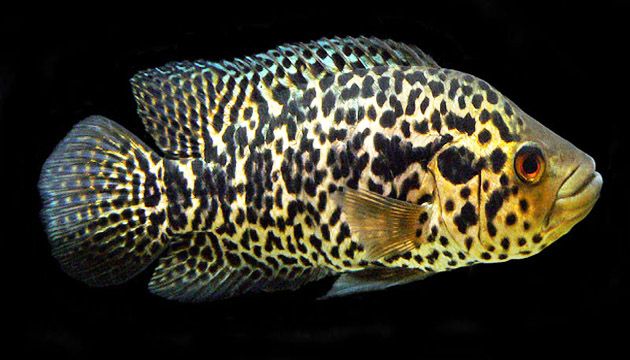
Parachromis Managuense, also known as Jaguar Cichlid, is native to waters in Central America. This is an adorable species that becomes a favorite among hobbyists and aquarists.
With a moderate care level, Jaguar Cichlid can be a fun companion for seasoned fishkeepers.
Featuring drab silver scales with black markings, this species has the ability to camouflage in the water.
It also has anal and dorsal fins that protect them from predatory fish, though they are naturally a fighter. This freshwater monster can grow up to 16 inches in length.
Pretty much like Dovii, Jaguar Cichlid is extremely aggressive. They have a big mouth and pharyngeal teeth that make them like real beasts.
They will also fight their enemies to death, which means they are not suitable for a community tank. Even worse, Jaguar
As they can grow larger, you may want to find a larger aquarium. A 125-gallon freshwater tank would be enough for this omnivore.
Butterikoferi Cichlid
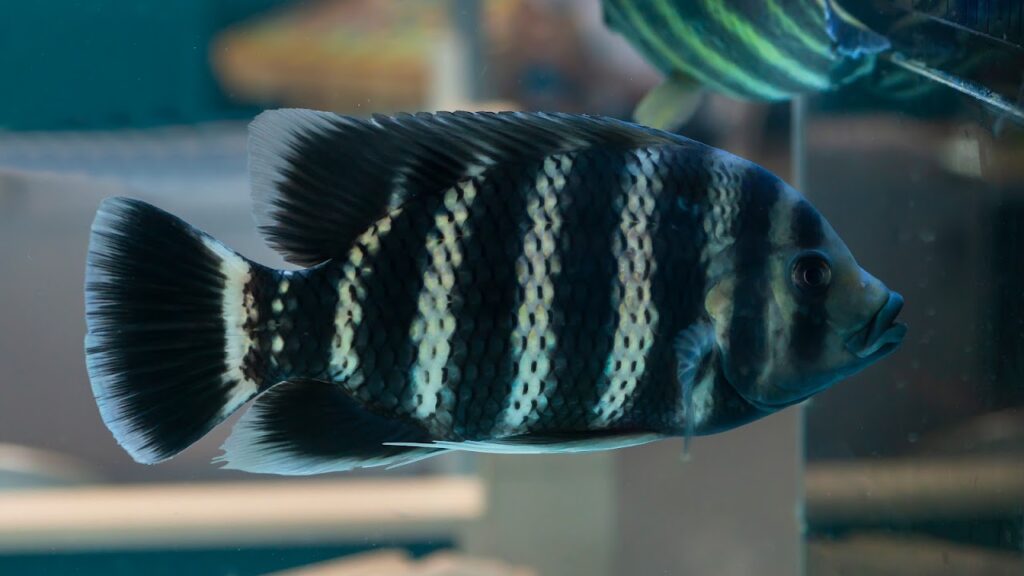
This is an attractive cichlid species that looks like zebra. It has a series of vertical stripes in black and white, making it completely similar to zebras—that’s why it is also called Zebra Tilapia.
Found in the rivers of Western Africa, Butterikoferi looks wonderful in your home aquarium.
This highly aggressive species can grow up to 16 inches. As herbivores, they mainly feed on aquatic plants.
Before deciding to keep these cichlids, you may want to learn how to care for them, especially to handle their aggressive behavior.
Butterikoferi has a strong and crushing bite that can rip off other fish. Just be careful with yourself and don’t mix them with other species.
Final Words
Now that you know the what is the most aggressive cichlid fish available on the market, it should be easier to get one for your freshwater tank.
Considering some aspects like fish size, aggressiveness level, and characteristics help you maintain the fish well.
